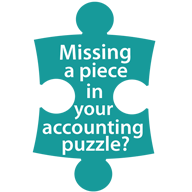Tax News – 2016 Tax Changes to Note
2016 tax changes you need to know about:
- Effective beginning with 2016 taxable years, the de minimis tangible property safe harbor has increased to $2,500 per invoice or item. The change affects regulations issued in 2013 that clarified when your business could expense tangible real and personal business property. Previously, the de minimis safe harbor let you elect to deduct individual capital expenditures of $500 or less if your business did not have an “applicable financial statement.” (In general, an applicable financial statement is a financial statement based on a certified audit by an accounting firm.)
- The extender legislation passed in December made changes to ABLE accounts. ABLE accounts – named for the Achieving a Better Life Experience Act that created them – are tax-beneficial savings accounts for qualified individuals with disabilities. The extender legislation eased the requirement that you had to open the account in the beneficiary’s state of residence. Now you are free to open an ABLE account with any state program you choose.
- Three Section 179 expensing deduction changes may affect your 2016 tax planning. First, the $2,000,000 phase-out limit was adjusted for inflation and is $2,010,000 for 2016. (The $500,000 deduction amount did not change.) Second, you may be able to deduct more of qualified leasehold, retail, and restaurant property in 2016. The $250,000 cap on the amount of Section 179 you could claim for this property was eliminated. Third, air conditioning and heating units are now eligible for Section 179 expensing.
- You have new options for funding your myRA this year. In the past, you could fund your account from your paycheck by completing a direct deposit authorization form and giving it to your employer. That option is still available. In addition, now you can choose to make direct deposits from a checking or savings account or from your federal income tax refund. A myRA (my Retirement Account) is a simplified Roth IRA that costs nothing to open, has no fees, and lets you start saving with any amount that fits your budget. The maximum contribution for 2016 is $5,500 ($6,500 when you’re age 50 or older at the end of the year).




